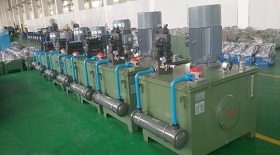General principles of fault diagnosis for hydraulic system
Correct analysis of fault is the premise of troubleshooting. Most system faults do not occur suddenly, and there is always a warning before the occurrence. When the warning develops to a certain extent, the fault will be generated. The cause of the fault is various, and there is no fixed rule. Statistics show that about 90% of the faults in the hydraulic system are caused by poor management. In order to diagnose the faults quickly, accurately and conveniently, it is necessary to fully understand the characteristics and laws of hydraulic faults, which is the basis of fault diagnosis.
The following principles are worth following in fault diagnosis.
1. First, it is necessary to determine whether the working conditions and peripheral environment of the hydraulic system are normal or not. It is necessary to find out whether the mechanical or electrical fault is the fault of the equipment or the fault of the hydraulic system itself. At the same time, it is necessary to find out whether the various conditions of the hydraulic system meet the requirements of normal operation.
2. Determining the region related to the fault according to the fault phenomena and characteristics, and gradually narrow down the scope of the fault. Detecting the components in the region. Analyzing the causes, and finally finding out the specific location of the fault.
3. Mastering the type of fault for comprehensive analysis, and gradually finding out various possible direct or indirect causes, based on the final phenomenon of the fault. In order to avoid blindness, comprehensive analysis and logical judgment must be conducted according to the basic principles of the system, so as to reduce the suspect object's gradual approach and finally find out the fault location.
4. When verifying possible fault causes, it generally starts from the most possible fault causes or the most easily inspected places, which can reduce the loading and unloading work and improve the diagnosis speed.
5. Fault diagnosis is based on operation records and some system parameters. The establishment of system operation records is the scientific basis for the prevention, discovery and treatment of failures. The fault analysis table of equipment operation is established, which is a highly generalized summary of the experience and is helpful to make a quick judgment on the fault phenomenon. It has certain detection means and can make accurate quantitative analysis to the fault.



